|
Verwood Memorial Hall.
Upgrades in 2018 |
The Verwood Memorial Hall was refurbished during August
2018. The upgrades included the refurbishments of the Elizabeth Room, new
insulation and re-covering of all roofs and the installation of new solar
panels. A new boiler, radiators for the stage and some new windows were also
installed, as well as new china and cutlery to cater for 120 people.
Grants of £5000 each had been given by the Town Council
and Verwood Solar Farm committee. Morison's also gave £20 towards the
buffet for the event.
The Memorial Hall was formally re-opened on Monday the 10th of September
2018 by Verwood's Mayor Sandra Grove. Those invited to attend included the
committee, team workers, and some of the contractors and regular hirers.
The Memorial Hall had been closed throughout August/September 2018 whilst
the improvements were made.
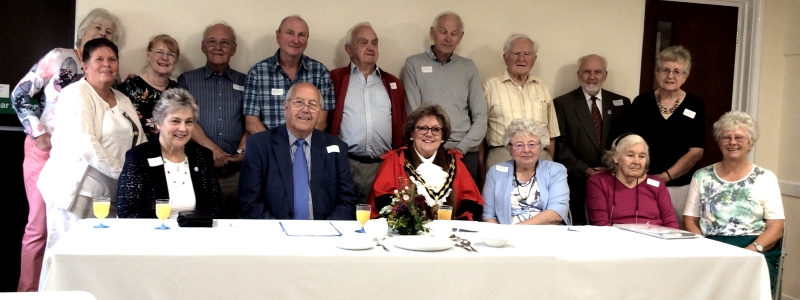
|
From the left - |
Vivien Clifton (Mayor's Escort), Dennis
Wright (chairman), Sandra Grove (Mayor), Ann Abernathy
(secretary/treasurer, Jane Lake and Angela Daymond. |
|
Standing Behind - |
Gill Hayhoe, Marilyn and Ernest Whatmore,
Mike Boney, Peter Haney, Barrie Collins, Austin Abernathy,
Councillor Biggs and Ann Hilton. |
The Building Sub-Committee members, Barrie Collins,
Ernest Whatmore and Peter Haney have helped maintain the building since
2003.
|
Verwood
Memorial Hall.
The First 50 years. |
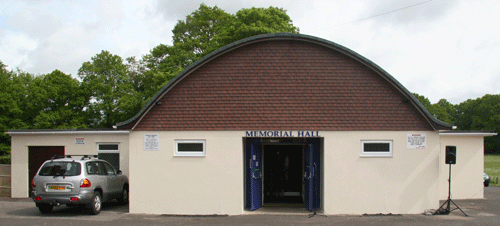
The
Memorial Hall in 2009.
In the 1930’s, the then Village
Hall, stood on the corner of Ringwood Road and Edmondsham Road close to the
Flats which are now situated there. It consisted of one largish room with a
raised platform at one end on each side of which was a tiny dressing room. There
were no ancillary rooms, no toilets and no rear exit; but outside at the back
was an Elsen bucket, approached by leaving by the front door and walking down the side. The other main meeting room at that time was in the
Restyng House which was later occupied by Baileys Electrical shop. After its
demolition, the Restyng House was replaced with the flats and shops we see
today, one of which remains as Baileys Electrical shop.
According to a former resident of
Verwood, Mrs Biddy Cannell, the initial thoughts about a new Village Hall (now
known as the Memorial Hall), were first voiced as early as 1936 when several
residents requested Verwood Parish Council to convene an open meeting to
consider the possibility of providing a new Public Hall. Consequently a meeting
was fixed for March 30th 1936 under the chairmanship of the late Mr. Robert
Thorne, J.P., at which a Resolution was unanimously approved, and an 'ad hoc'
committee was set up to examine the possibility and report back. At the outset
it was considered that “all bodies of social service in the district should
join in the appeal for funds”. The first committee consisted of Dr. & Mrs.
Tame, Mr. & Mrs. A. E. Brewer, Mr. & Mrs. Dennis Cannell, Miss. A. E.
Bailey, Mr. Robert Thorne, J.P., Mr. R. A. Franklin, Mr. F Osman, Mr. R. Brown,
Mr. J. Sherry, Mr. G. Miller-Reid, Mr. C. F. Rugg, Mr. H. C. Barrow and Mr. O.
Channon Collinge. Their brief was to investigate all aspects including — site,
funds, grants, loans, trusts, etc.
Approaches were made to the
Carnegie United Kingdom Trust and the National Council of Social Service
relative to the possibility of raising a loan or the obtaining of a grant.
Messrs Sims Brothers offered a
site that was considered, at the time, suitable for the new hall, and the land
was purchased for £100 conditional on it being sold back to the vendors, at the
price paid, should the project not materialise. (After the Second World War the site was found
to be unsuitable, as the building lines reduced the area available. Subsequently
the site was resold to the original owners, and now forms part of the Coronation
Road and garden development.)
During the next
three years, many and varied were the attempts to raise funds — Whist Drives,
Fetes, Dances, Concerts, 'Talking Picture shows' and proceeds from Annual
Carnivals which raised the bulk of the funds. At
the end of 1939 the total raised amounted to £354
With the outbreak of war in 1939
all functions were cancelled and the money already raised (£354) was invested
in a 3% War Loan. The 'ad hoc' committee was also put on hold until the end of
the war and in October 1945 a ‘Thanksgiving Week’ was organised, and from
this effort a further £73.13s.6d was added to the funds.
In June 1946 the annual Carnival
was revived and a record sum of £361.13s.9d was added to the fund. To raise
more funds, Mary Wilson, Auctioneer, held an auction of furniture in the
original village hall, at the crossroads. Muriel King, who lived at Glenwood
Rd., sent a piano to be sold which was bought by Jim Laird who lived a few doors
away in Glenwood Rd!
Many
more events were held to raise funds for the new hall until by the end of 1952 it had amounted to £1967.18s.2d.
Progress
was made in 1955, when the basic requirements for a possible ministry grant were considered. These required a Committee
of Management and Trustees to be appointed. The National Council of Social
Service gave invaluable help and advice.
The
Parish Council were appointed Trustees, and the Committee of Management was
formed. This consisted of the Trustees plus a representative appointed by each local
organisation, together with the Schoolmaster, three members elected annually at
the Annual General Meeting, and not more than three by co-option. Consequently the New Hall Fund Committee was renamed the Memorial Hall Committee of
Management.
After inspecting and
discussing the merits of various proposed sites, a Parish Meeting decided that
theMemorial Hall should be erected in the Recreation Ground, (The “Rec.” is
a memorial to those who fell in the 1914-1918 World War.) this met with a lot of
opposition from various bodies at the time, and eventually it was agreed that it
should go in one corner.
In discussions with Ron Garnham
(son of Councillor Thomas Garnham) the author understood that initial plans were
for a hall to be combined with that of a Sports Pavilion containing a veranda
from where cricket and football matches could be observed on the Recreation
Ground. This has since been confirmed by Dennis Wright. It was to be built on the land that is now occupied by the Children’s
Play Area (2009). This idea was thrown out by the Charity Commissioners as it
was on too lavish a scale for the size of the village. The population at that
time was around 2500 inhabitants. The architect’s new idea was to remove the
Sports Pavilion aspect and build the hall in such a way that the Pavilion could
easily be appended at a later date, but this was also not allowed by the
Commissioners.
There were two builders on the
Parish Council, one couldn’t get the bricks and the other couldn’t get the
timber. Things came to a standstill.
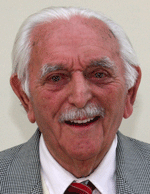 In
the course of his work Mike
Wareham often went to the REEMA construction plant at
Romsey, where they made all kinds of prefabricated buildings, village halls
included. He went to the Council meeting and at the appropriate time, gave them
his ideas. A visit was made to Fordingbridge to look at one the new In
the course of his work Mike
Wareham often went to the REEMA construction plant at
Romsey, where they made all kinds of prefabricated buildings, village halls
included. He went to the Council meeting and at the appropriate time, gave them
his ideas. A visit was made to Fordingbridge to look at one the new
Many
REEMA halls were built in the south and many still exist in this area, at
Fordingbridge, West Parley, Broadstone and Coombe Bissett. The one that did
exist in Cranborne had since been replaced with a new hall on the same site.
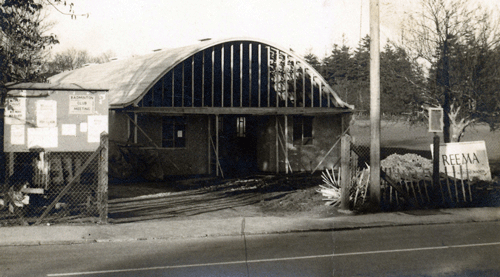
The
Memorial Hall under construction.
The
building of the Hall was very much a village affair. Thorne’s Timber Merchants
removed the trees, to prepare the site. John Baker then dug the drains with his
digger and assisted Jim Scammell, with other volunteers in the digging of the
cess pit. The REEMA Hall
itself was built by Alf Harley and Jim Laird.
Mike
Wareham’s son, Adrian, well remembers the day when the building started. Mr.
Cottrell (The Council School (now Hillside School) - Headmaster), took all the
boys out of school to see the big crane lifting the sections into place.
|
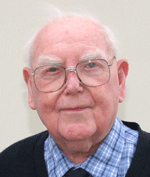
Jim
Laird |
|
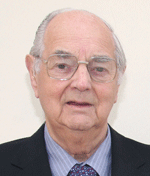
Fred
Bailey |
|
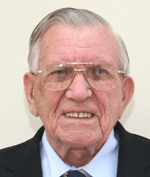
Stan Prince |
Fred
Bailey
(One of the original Founders of Baileys Electrical) did all the
electrical work and Stan Prince fitted the gas water heaters. Original curtains
and wall colour were chosen by Mrs Agnes Thorne and niece, Brenda Reeks.

Opening
Ceremony
(L-R) Mr Clifford Barrow, Mr Horace Thorne, Ted Cox, Thomas Garnham, ?, ?, Reg
Smith.
A
formal opening ceremony was held on the 9th May 1959. The hall was
built for the benefit of the Parish and was dedicated as a tribute to those who
gave their lives during the 1939-1945 war. The auditorium will seat a maximum of
200 with a
stage and adjacent dressing rooms. The general purpose wooden floor was marked
out as a Badminton Court though this did have its problems as the roof was
really a bit too low. (Badminton moved to the new leisure centre in 1981.)
Soon
after the hall opened, the antenatal clinic was held in the hall. Babies were
weighed and the well known Nurse Fuller was there for advice.
Malcolm
Smith’s earliest recollection of the hall, was attending a carnival dance in
the late 1960’s where he and his wife Brenda were the only, extremely
overdressed, adults. They sat on the wall bench on the field side, looking at a
row of leather jacketed youths seated opposite. They did dance a bit, but
don’t think that they stayed to the end.
Until
1999 the Carnival was held on the Recreation Ground, the Memorial Hall being
used to serve refreshments. It has been used by the AmDrams until a few years
ago with 2 plays being produced every year and the Pantomime Society staged all
its productions there until 2007 when they transferred to the new Verwood Hub.
Regular dances, whist drives, bingo sessions, concerts, bazaars, films shows,
and Jumble Sales, as well as the Friday Market which continues today,
were enjoyed.
In
1977 the Memorial Hall was extended during the Queen’s Silver Jubilee with the
addition of the “Elizabeth Room”. More recently with support from the three tiers of local
government and grants from "Awards for All" and "Dorset Community Action" many
improvements have been made to the hall. In 2004 a new heating system and
ceiling fans, electrics and plumbing were upgraded with a new toilet for the
disabled installed in 2007. In 2008 a small front extension was added to provide
independant access
to the “Elizabeth Room” and the kitchen was thoroughly modernised; new
blinds, curtains and chairs have also been purchased. New fascias, soffits,
guttering, downspouts, front tiling and cctv were then added and currently there
are plans for a new porch.
The
hall has come under threat a number of times. Firstly in 1988 the East Dorset
District Council put forward a proposal to build a new hall behind the existing
REEMA building with the current memorial hall being demolished to provide a car
park for 142 cars. Remember that at that time the current car park behind the
Heritage Centre did not exist. There was a great deal of local opposition to the
plan which was later dropped.
In
1999 the Town Council supported a proposal to build a Day Centre and a Community
Centre on the Recreation Ground with the Memorial Hall again being demolished
leaving Verwood with no hall at all during construction. The Day Centre was slipped from the plans
and a new Community Centre was proposed on the opposite side of the Recreation
Ground along the side of Vicarage Road with the Memorial Hall again being
demolished but residents again objected. This plan was put to a public
consultation run
by Bournemouth University when an option to build a new community centre on land
known as
Bakers Farm was also included. The Bakers Farm option was very strongly
supported. This resulted in the Day Centre also being built at Bakers Farm with what it now
“The Hub” alongside. The Memorial Hall continues to be well used for
small events, with larger events being held at The Hub.
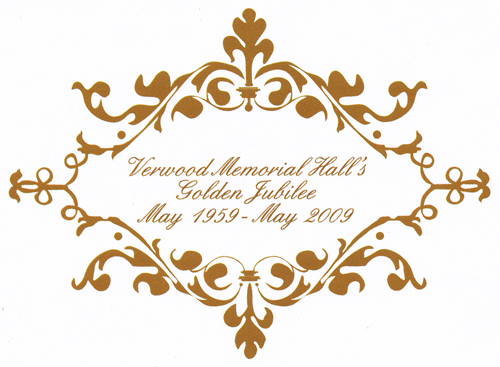
Webmaster
– http://verwood.org
References:-
·
Notes
from the Opening Ceremony Souvenir Programme from which large sections of the
included history were included.
·
Stan
Prince – thoughts of “The Memorial Hall” – unpublished.
·
Winifred
(Biddy) Cannell – letter to the Mayor, January 2000.
·
Verwood
Echo report – Memorial Hall opened.
Thanks must also
go to all those old Verwoodians who wrote down their reminiscences and to those
still alive who allowed the scavenging of their memories. Thanks must go to Pam
Reeks and Angela Daymond for compiling a lot of general titbits and information
|